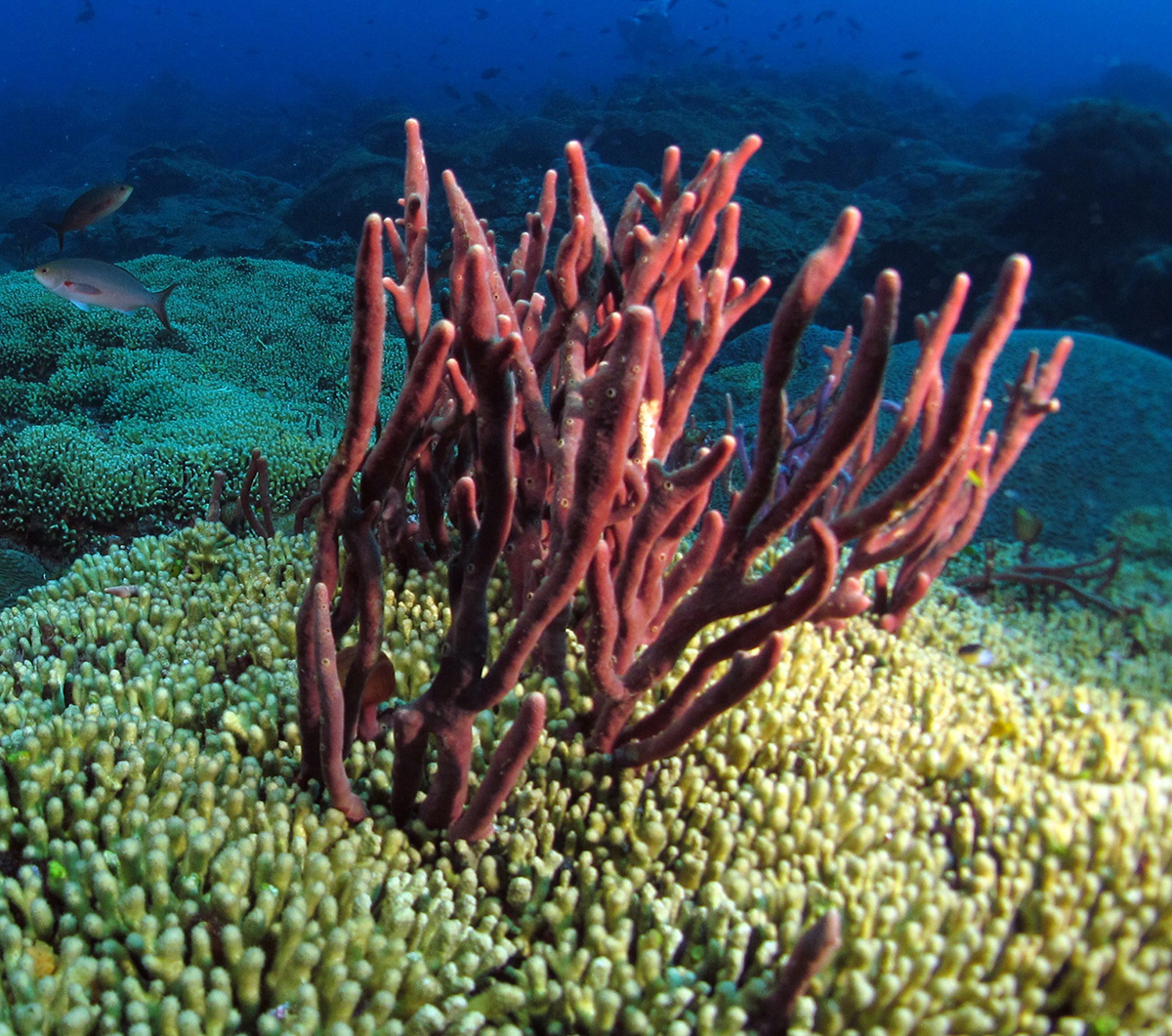Pollution From Hurricane Harvey Traveled 100 Miles Off Texas Coast
A Texas A&M study shows weather events carried contaminated water to the Flower Garden Banks sanctuary off the Galveston Coast, much farther than expected.
Apr 9, 2021

A team of researchers that includes three Texas A&M University oceanographers has found that human pollution from floods in 2016 and Hurricane Harvey in 2017 made it all the way to the Flower Garden Banks National Marine Sanctuary, located about 100 miles off the Texas coast.
Dr. Kathryn Shamberger, assistant professor of oceanography at Texas A&M University's Department of Oceanography, along with Texas A&M oceanographers Dr. Shawn Doyle and Dr. Jason Sylvan, and researchers from Rice University, University of Houston-Clear Lake, and Boston University have had their work published in the current issue of Frontiers in Marine Science.
The team examined sponges in the Flower Garden Banks, a popular diving area known for its colorful coral reefs. It was designated as a national marine sanctuary in 1992 and now has 17 different reef systems.
The researchers found bacteria from human wastewater, including E. coli, in sponges at the Flower Garden Banks after flooding events in 2016. Hurricane Harvey in 2017 also carried contaminated water from the Texas coastline to the Flower Garden Banks. Researchers had previously believed the area to be far enough out in the Gulf that such pollution was not a concern.
Shamberger said the team was surprised to find bacteria typically associated with wastewater in coral reef sponges so far offshore.
“It has been known for decades that freshwater from land can reach these reefs and lower the salinity at the surface, but salinity changes that far offshore are small because freshwater mixes with seawater as it travels offshore,” she said. “Also, the Flower Garden Banks reefs are about 60 feet deep and low salinity water stays at the surface, so these reefs have been thought to be largely protected from land-based pollution.”
Doyle said the researchers used sponges living on the reefs as super-sensitive monitoring tools for water quality.
“Because they filter and concentrate bacteria from hundreds of gallons of seawater a day, looking at the sponges’ microbiomes (a collection of microorganisms that live on or inside an animal) allowed us to find signs of wastewater that were far too diluted to detect in the water column,” Doyle said. “Both flood periods that were sampled in this study showed bacteria associated with wastewater in the sponges, but we do not know how often floodwaters bring harmful bacteria all the way out to these coral reefs.”
Hurricane Harvey was the biggest rainfall event in U.S. history and dropped an estimated 13 trillion gallons of rain over southeast Texas in late August 2017.
Shamberger said Harvey floodwaters were swept down the Texas coast with the currents once they reached the Gulf of Mexico, and only a small amount of runoff went offshore all the way out to the Flower Garden Banks.
It appears there was little mortality in marine life associated with the polluted waters from Harvey, but she added that more work needs to be done to determine how bacteria linked with floodwaters affect sponge and coral reef ecosystem health in the area.
The big picture is that even coral reefs 100 miles offshore can be negatively affected by land-based pollution, Shamberger said.
“Intense storms with excessive rainfall that causes flooding in coastal urban areas will continue to increase with climate change, putting these coral reefs at risk,” she said. “Anything that can help decrease flooding will make coastal communities more resilient to future storms and protect offshore marine ecosystems that support coastal economies.”
The study was funded by the National Science Foundation, the Gulf Research Program of the National Academies of Sciences and Rice University.
By Keith Randall, Texas A&M University Division of Marketing & Communications

